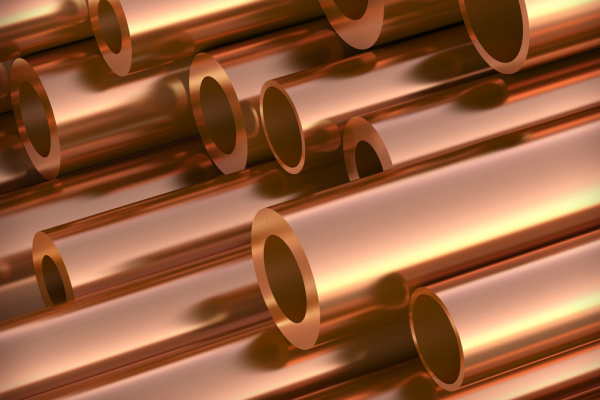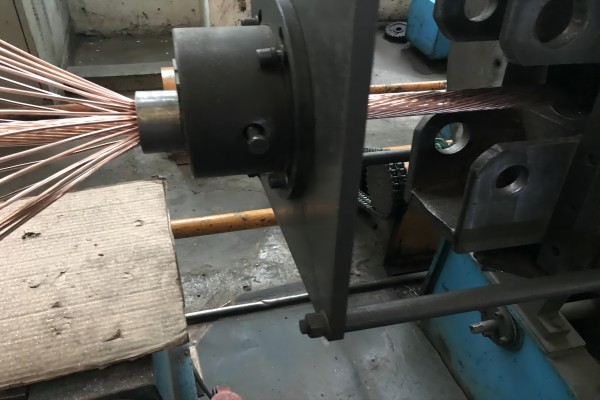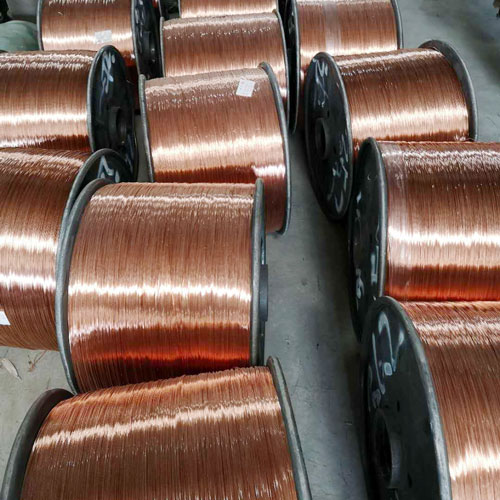Bare Stranded Copper Conductor is essential for everyday power transmission and industrial power distribution.
When people think of cables, they always think of cables wrapped in thick black insulation, such as XLPE PVC insulated cables, submarine cables, and control cables. They are all cables that consist of thick insulation and multiple layers of sheath. Today ZMS introduces this kind of cable only shiny and smooth conductor core composition, but in life and industry plays a great role, it is made of pure copper cable, called bare copper conductor.

Bare copper conductors can be found everywhere in our lives, in automotive wiring, home power distribution speaker wiring, etc. Compared to other types of wire, bare copper conductors have several advantages, such as corrosion resistance and high conductivity. Let’s take a closer look at what a bare copper conductor is and how it relies on only a bare copper core to transmit power.
About Bare Copper Conductors
A bare copper conductor is a type of wire and cable that has no insulating jacket or is not wrapped in any other material. This makes it ideal for use in exposed areas such as switchboards or inside appliances. It can also be used as a grounding wire to be buried directly into the ground or exposed to humid air.
One of the main advantages of using bare copper conductors is their metal resistance to corrosion. This makes them ideal for high-voltage applications that require fast and efficient transmission of power. In addition, bare copper conductors are relatively inexpensive, making them popular for many commercial and industrial applications.
Bare Copper Conductor Construction Process
Bare copper conductors, as the name implies, consist of only a copper core as the conductor. Secondary annealed stranded copper is generally chosen as the conductor material. One of the requirements of the special bare copper conductor is oxygen-free copper content of copper > 99.97%, and low-oxygen copper content of copper > 99.95%.
The first step is to draw the wire to make bare copper conductors. This is usually done by drawing a large block of copper metal through progressively smaller molds. The result is a smooth, shiny copper conductor of uniform thickness.

The final step is to anneal the wire, which helps to improve its flexibility. Once the wire is drawn, it can be used directly or coated with another material to enhance its corrosion resistance. The advantages of using bare copper conductors include low resistance and ease of soldering. In addition, copper is a very recyclable material, making it a good choice from an environmental standpoint.
Tin Plating Process
The process of tinning copper refers to the process of applying other materials to enhance the corrosive properties of bare copper conductors after they have been drawn, as mentioned above. Because the purity of the copper material is too high, it will gradually oxidize in the air, resulting in a decline in its transmission performance. Tin plating on the surface of the copper conductor enhances the corrosion resistance of copper and makes it less likely to oxidize. The tin layer can be exposed to any environment, including humid air, corrosive agents, or high temperature areas.
This is the difference between tinned copper and bare copper conductors.
Soldering Tips for Bare Stranded Copper Conductor
Bare standard copper conductors often need to be soldered in use because they are not long enough. Because any other material does not cover bare copper, it will take less time and effort to solder. This is a great way to join two pieces of metal together without the need for any other material. The method of operation is as follows:
- Clean the surface of the copper with sandpaper to remove rust stains and dirt so that the copper wires will adhere better when soldered to each other.
- Join the two copper surfaces to be soldered together, making sure they touch each other. Heat the joint with a soldering iron, which should be between 700 and 900 degrees Fahrenheit.
- Feed the solder into the joint while continuing to heat it. The solder will melt and flow into the joint, bonding the two pieces of copper together.
- Once the solder has cooled, you can trim the excess with wire cutters.
Soldering copper requires safety precautions such as eye and hand protection.
How Do I Recognize Real Bare Copper?
In general, identify copper based on its metallic properties. Real copper with high purity absorbs blue-green light, resulting in a distinctive orange-red color. When you hold a bare copper conductor up to the light, if it doesn’t look orange-red, it’s most likely not copper.
Because bare copper conductors are also divided into many types, each has its unique characteristics. That’s why it’s important to pay more attention to identifying the real thing when choosing one. The most common type of conductor is solid copper, made from a single rod of pure copper. This type of conductor is very strong and unbreakable, but it is also costly.

Another common type of bare conductor is stranded copper, which consists of several small strands of copper wire. This type of conductor is more flexible than solid copper, making it ideal for applications that require flexibility.
Finally, there is tinned copper, which is coated with a thin layer of tin. This helps to increase the conductor’s corrosion resistance, making it ideal for use in harsh environmental conditions.
To Summarize
It’s important to make sure that bare copper conductors are the best choice for your specific needs. One way to do this is to consult with an experienced electrician who can assess specific needs and recommend the best options. If you do decide to use bare copper conductors, be sure to compare prices and features to find the best product for your needs.

Here are a few things you need to keep in mind when purchasing bare copper conductors:
- Make sure you buy from a reputable retailer, preferably with project work on bare copper transactions to help you recognize authenticity.
- The size and gauge of the bare copper conductor need to be considered. The size will determine how much current it can carry and the gauge will determine the thickness of the conductor. You can also contact us for customization if you need a special item.
- The price of l conductors varies a lot, so it is very important to find one that fits your budget. With these factors in mind, it is all the more important to choose a supplier with a good reputation to get the best value for your money.
Above is the information about bare copper conductors, if you still want to know more about cable models through ZMS cable, you can always contact us or pay attention to our website information update.
